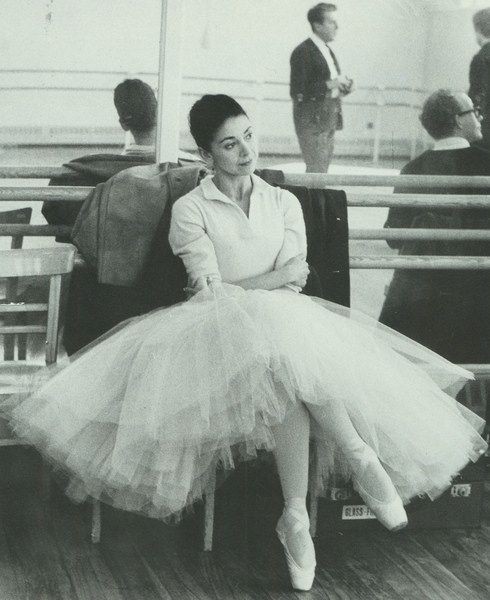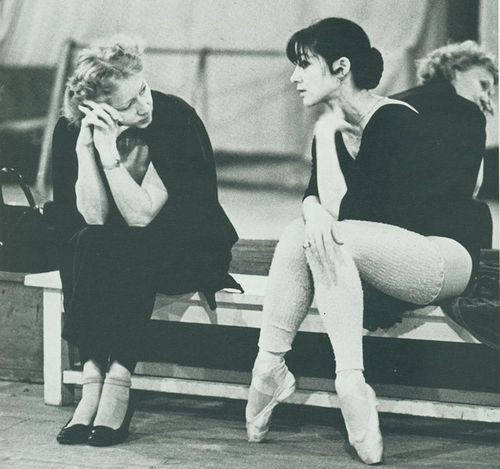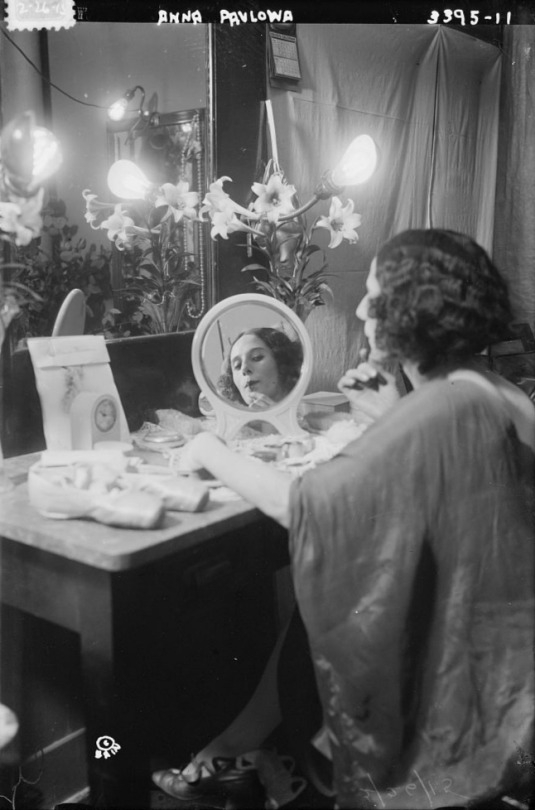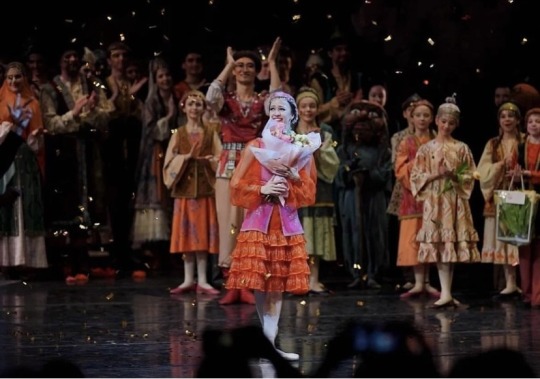#Russian ballet
Explore tagged Tumblr posts
Text







russian ballerina
#girlblogger#vaganova#saint petersburg#russia#eastern europe#russian ballet#ballet#ballet vaganova#ballerina#russian ballerina#girlhood#girl interrupted#manic pixie dream girl#girlcore#gaslight gatekeep girlblog#girlblogging#just girly thoughts#coquette#balletcore#ethereal#tchaikovsky#swan lake#the nutcracker#giselle#black swan#eastern european core#russia aesthetic
373 notes
·
View notes
Text

Russian ballerina Tamara Karsavina,Saint Petersburg (1907)
Photography by Alfred Eberling (1872-1951)
#Россия#photography#Russia#vintage#Санкт-Петербург#Saint Petersburg#русская балерина#russian ballerina#ballerina#Тамара Карсавина#Tamara Karsavina#русский балет#russian ballet#ballet#beauty#русская культура#russian culture#culture#Europe#русский фотограф#russian photographer#photographer#Альфред Эберлинг#Alfred Eberling#history#russian#european#black and white#1907#1900s
983 notes
·
View notes
Text

still miss it tho
#this is what makes us girls#core#00s#aesthetic#doll#coquette#gloom coquette#girlblogging#slavic doll#y2k#ballet aesthetic#ballet#russian ballet#dance#lizzy grant aesthetic#lana del ray aka lizzy grant#lizzy grant#lana del ray aesthetic#lana del rey#gaslight gatekeep girlboss#female manipulator#female rage#female hysteria#girl interrupted#girl stuff#im just a girl#black swan#just girly things#hell is a teenage girl#tumblr girls
113 notes
·
View notes
Text

Anna Pavlova, 1925
#Anna pavlova#pavlova#1925#1920s#1920s style#1920sbfashion#twenties#twenties fashion#roaring 20s#roaring twenties#ballerina#ballet#ballet dancer#Russian ballet#20s fashion#20s style#20th century#20th entury fashion#early 20th century#turn of the century#belle epoque#findesiecle#20th century art#20thcenturydesign#history of dance#ballet history#history of ballet#history of fashion#fashion history#costume history
87 notes
·
View notes
Note
I need to rant somewhere: Catherine Pollack wrote this on her instagram: LIKE WHAT THE FFFFFF. The irony is that she posted videos of Khiteeva dancing BEAUTIFULLY alongside this.
A memorable matinee performance of “Raymonda” took place on March 15. First, there were more than twenty debuts in roles ranging from principal to secondary and character parts. Second, and unfortunately, A. Ermakov was injured during his variation. Another factor, in my opinion, was the accumulated stress caused by his many years of being (and there’s no other word for it) exploited as the company’s tallest and strongest male dancer, tasked with lifting larger female soloists. Instead of getting into shape themselves, these dancers relied on his exceptional partnering abilities. He repeatedly risked his health by lifting performers of weight categories that, by definition, should not exist in classical ballet (though this doesn’t entirely apply to the debuting ballerina). Before long, the tall prima ballerinas of the Mariinsky will have no partner to dance with, because these female soloists simply cannot lose weight.
By the way, Andrei “jumped into” the production, replacing T. Askerov, with whom A. Khiteeva had been preparing her debut (Timur withdrew a couple of days prior). I must commend Alexandra’s resilience and resourcefulness: having lost her partner on stage, she instantly adapted and filled the sudden gap in Jean de Brienne’s coda with an improvised repeat of her own coda using passé relevé—at an incredible tempo and with aplomb. Bravo! In the current climate, stress tolerance is in high demand; the company needs ballerinas it can depend on.
All the same, A. Khiteeva’s inclusion in “Raymonda” is contentious for reasons I’ve already discussed in my notes. Her artistic type is more ingénue than Grand Dame, and her access to the lead roles in “Swan Lake,” “La Bayadère,” and “Raymonda” was justifiably restricted, primarily due to her ballet and physical attributes—her stocky figure and proportions.
“The role of Kitri can be assigned to a highly agile ballerina… But to dance Odette and Odile or Raymonda, a ballerina must have a slender figure, ‘singing’ arms, and long legs. Dancers with a squat figure are not suitable for these roles…,” writes choreographer R.V. Zakharov, and I share his opinion. To be continued…
I thought on the whole, Khiteeva danced very well, especially given the last-minute partner switch. Khiteeva has a lovely presence, vintage port de bras and elegant, restrained classical lines and I've read numerous comments saying her persona isn't done justice on the video. I know Khiteeva is not the most traditional adagio dancer but I was blown away. The dream adagio variation is stunning, smooth, and calm and the details of her port de bras are unmissable. Not to mention, her reprisal of the coda, when Ermakov had gotten injured literally just minutes before, takes nerves of steel (and iron calves).
My main criticisms with her lie in the wedding variation, her legs just look a little shot and you can tell. I thought she looked a bit tired and this affected her upper body and epaulement as well, which was gorgeous for most of the ballet. There was wobbly pointework and some clunky and imprecise pas de bouree. This variation is deceptively difficult because it's so simple and your mistakes are so easily visible, and you have to dance it at the end of a very long ballet. Khiteeva has some progress to make in terms of her stamina for a full-length ballet, especially one as intense as Raymonda but I thought this was a very solid debut.
Regarding Pollack's complaints about on 'overweight' ballerinas. Khiteeva's body type, while not as slender as some of the other Mariinsky dancers, resembles a lot of dancers in major European and American companies. I'm not going to name names but look at some of the top principals at the Royal, Dutch National, and even Paris Opera for instance. Of course, all of the women are in ridiculous shape, but few are as rail thin as many of the Russians, this doesn't affect their ability to dance or portray particular characters in ballet. This is separate from talking about typecasting or technical abilities.
And while I don't disagree that Ermakov is overworked, telling the women that they need to diet to extremes is just not the solution. Google says Ermakov is 195 cm, at that height, he's going to be responsible for dancing with the tallest women in the company. Mariinsky knows what dancers they have employed- and they have a lot of tall, long-legged women. They're not suddenly going to weigh (nor should they) the same as shorter dancers. There is also not an actual 'definition' of a magic weight that a professional dancer has to weigh. I'm sure Pollack is referring to the VBA regulations but those are incredibly stringent, (girls over 50kg are often not allowed to be lifted) and have been consistently tied to eating disorders and also are structured for students going through puberty, not fully grown women. I know for a fact that these are certainly not followed in the professional world. Certainly, there is pressure to be in shape and to be thin, but different bodies carry weight differently and there is a growing acceptance of dancers looking like women and not like toothpicks, especially in the West. Case in point, I weigh more than 50kg, I'm dancing pas de deux, classical and contemporary on stage with a prominent theater, as do many of my colleagues. So much about safe, effective lifts is about technique, coordination and trust, not just about a number on the scale.
The bigger issue, which Pollack makes no mention of is that Ermakov does not have enough help. Among the principal men, Kimin and Stepin haven't been cast with the tallest women, only Askerov can really chip in. Considering the first soloists, Belyakov is useful but Capitane is not tall enough, Korneyev and Konovalov are not the most stable partners, Sergeev is aging out of big classical roles and Zverev's stage presence is frequently lackluster. The second soloists have a lot of young guys, who are slowly developing but have limited repertoires at the moment. I think Malyshev and Baibordin have a lot of potential, but I'm not sure either of them has danced a principal role in a full-length ballet. They can't be go to, pinch replacements with their lack of experience. This is one consequence of MT being so slow to develop their younger men, it means that people like Ermakov and Askerov have more intense workloads and are more vulnerable to injury. Now I wish the MT management did more to combat that, if they want to continue to hire so many tall, lanky women, I wish they would be more proactive about hiring men and continuing to look outside VBA for talent.
#ballet#ballerina#mariinsky ballet#russian ballet#mariinsky theatre#vaganova ballet academy#Alexandra Khiteeva#raymonda#ballet ask
28 notes
·
View notes
Note
Let's play a game: I’ll name common famous dancers and you say what that says about that person:
If my fav dancer is:
Anna Pavlova—
Alessandra Ferri-
Carla Fracci-
Maria Taglioni-
Sylvie Guillem-
Maria Khoreva—
Diana Vishneva—
Gallina Ulanova-
Marianela Nuñez—
Maria Bulanova —
Altynai Asylmuratova-
Ulyana Lopatkina—
Olga Smirnova-
Ekaterina Maximova -
Evgenia Obraztsova -
Nicoletta Manni—
Natalia Ospipova -
Sofya Valiullina-
Maya Plisetskaya-
Svetlana Zakharova
Alina Somova —
Alexandra Khiteeva—
Victoria Tereshkina—
Renata Shakirova —
Galina Ulanova-
Maria Koshkaryova-
Maria Iliushkina—
Eleonora Saveyard-
Elena Svinko-
Svetlana Savalieva -
Nina Kapstova-
Elisabetta Nallin—
Angelina Vorontsova -
Yulia Makhalina—
May Nagahisa -
Kristina Shapran—
Camilla Mazzi-
Oxana Skorik-
So I've been wanting to answer this one but boy this is a long list but I'll try my best.
If this is your favorite dancer, then you:
Anna Pavlova - are swan obsessed
Alessandra Ferri - have impeccable taste and you love her interpretation of Juliet
Carla Fracci - are Giselle obsessed
Maria Taglioni - are dead
Sylvie Guillem - love trail blazers, and appreciate a mix of classical ballet and contemporary
Maria Khoreva - are chronically online
Diana Vishneva - love an objectively (nearly) perfect dancer
Gallina Ulanova - are an old soul
Marianela Nuñez - love a clean turn and a well rounded dancer
Maria Bulanova - love jumper and turners
Altynai Asylmuratova - nostalgic of Kirov days and love a dancer who can do a good Medora and Nikiya
Ulyana Lopatkina - love love love Russian ballet
Olga Smirnova - also love Russian ballet but you weren't old enough to see Ulyana Lopatkina in her prime
Ekaterina Maximova - love passionate dancers and good Kitris
Evgenia Obraztsova - love a charming stage presence
Nicoletta Manni - are well researched and love a technically proficient dancer
Natalia Osipova - love bravura roles but you also appreciate seeing dancers who grow tremendously out of their box
Sofya Valiullina - are new here lol! But you love a technically proficient dancer
Maya Plisetskaya - are deep into your research and you love strong dancers
Svetlana Zakharova - are obsessed with naturally gifted dancers.
Alina Somova - Love hyperextensions
Alexandra Khiteeva - Love a killer port de bras!
Victoria Tereshkina - are obsessed with strong dancers who can do no wrong!!!
Renata Shakirova - Love a versatile dancer
Maria Koshkaryova - are new here! But you're Vaganova obsessed.
Maria Iliushkina - Love dancers with emotional depth
Eleonora Sevenard - learned about her from when you got into Vaganova in 2017 and you've been obsessed ever since
Elena Svinko - (I'm sorry I don't know her well enough)
Svetlana Savalieva - a hopeless romatic and believes she deserved a fair chance into soloist territory!
Nina Kapstova - are a fan of absolutely flawless dancers
Elisabetta Nallin - are new here!
Angelina Vorontsova - prefer Mikhailovsky over Mariinsky and Bolshoi, and you're probably better off for that. Respect.
Yulia Makhalina - are ME and are CORRECT, but seriously though. You have good taste and you wished there were more clips of her out there.
May Nagahisa - love a perfect Aurora interpretation
Camilla Mazzi - don't love a perfect Aurora interpretation. Yeesh it got spicy here.
Kristina Shapran - You have faith in Mariinsky's next generation of principal dancers
Oxana Skorik - are Catherine Pollak. LOL. But actually, you have good taste and you just weren't around during Yulia Makhalina's time.
35 notes
·
View notes
Text
Khiteeva’s debut as Raymonda appears quite the success from the various IG reels that I’ve seen. Honestly, I was a bit nervous for Khiteeva because the role is a technical and artistic Olympus — and if you fall short — the St. Petersburg theatergoers will tear you apart. But my worries were unwarranted. Not only was she prepared, she danced beautifully— confident, technical, musical. I did see a couple bobbles, but nothing that warrants criticism.
And Bravo to the many other debuts! Savalieva, Barinova, Kulikova, Deryabin…the list goes on on! It felt like a breath of fresh air in the Mariinsky.
I’ve ripped this clip from 📽️: Natashik_B on IG. She has many more, and they all make me very happy! What really stands out here is Khiteeva’s footwork, epaulement, and poise. She makes this look so effortless and light while commanding the stage. 👏
20 notes
·
View notes
Note
I was watching Bolshoi's old recording of Paquita Grand Pas (the one w/ Maria Alexandrova as the lead) and couldn't help but feel so sad. Bolshoi used to give so much energy no matter who the dancer was. All of them looked genuinely love dancing and enjoyed their time performing on the stage. They were such a joy to watch and I've never gotten so much positive energy watching other companies. Today's Bolshoi looks so pale in comparison, as if it has lost its soul. Where did it all go wrong?
You’re absolutely not alone in thinking this. My personal opinion is that there will always be ups and downs. And when we look back, we usually only see the “highlights” — not what everyday life was actually like.
There’s also a sort of cultural homogenization happening, and not just in the ballet world. In the past, there was a clear division between styles and methodologies, which is now beginning to blur. It’s no longer so easy to recognize which style a dancer was trained in. The method is still somewhat distinguishable, but the style much less so. I’m not sure what’s causing this. Perhaps academies are losing their monopolies and tight grip — both in good ways and bad ways. It used to be obvious where a student trained, and careful eyes could detect the influence of their pedagogues in the dancer’s movements. To stereotype: Bolshoi was bold, Mariinsky was lyrical, right? But today those lines are blurred, and I fear that in this neutral zone, there’s less room to shine. Everything feels "fine" — without infamy, but also without high praise… beige… standard.
I have a theory — based on very little, so perhaps better to call it a hypothesis — that companies are touring less and that there’s less competition between companies. Maybe because the average level has improved, and audiences have shrunk, so there's less need for companies to diversify and create distinctive “wow” factors. Imagine when the Bolshoi toured the States years ago: there was a cultural push to make the Bolshoi even more Bolshoi. Now… not so much.
Another small hypothesis I have is related to social media. There’s so much admiration for “low legs” and “artistry” when people watch vintage ballet videos. But if Maria Khoreva posted a video tomorrow dancing exactly like that, she'd likely be torn apart. Along these lines, I think dancers — especially in Russia, where there doesn't seem to be a strict “NO CELL PHONES IN THE THEATRE” policy — know their performances will end up online. So why would they risk being emotional, bold, or raw, only to face public scrutiny? Audiences used to be limited to those in the theatre, followed by reviews. But a journalist’s review is different from random people like me watching a bootleg video and saying, “Hmm, her fifths aren’t tight,” then leaving a hate comment. (I would never leave a hate comment, but people online, especially anonymous ones, can be cruel.) Take Maria Koshkaryova, for example. If she had danced in the ’90s, wouldn't we be praising her today for her energy, passion, and bravado? Instead, now, many say she sacrifices technique for effect. I’m not even talking about artistry — she’s still so young, and artistry is developed over time — but her technique should be at its peak. And yet, that's what I like about her AND ALSO, what I don't like about her. She doesn’t seem afraid; she has some of that old-school bravura. Sometimes it works brilliantly (and how great it is when it does!), sometimes less so. But the difference is, in the past, only the best performances were filmed and shared. Now, everything is available for everyone to dissect. Also consider that many artists share these videos on their instagrams, and that it's actually a way for them to make some more money/gain audience, so it would make sense they act risk averse to avoid negativity.
But this could be completely untrue, perhaps the artists are being told to tone everything down, perhaps they are encouraged to focus on other things rather than the spirit dancers were told to show years past. Priorities shift. Perhaps the dancers themselves prefer to show of their technical abilities (which they've worked on since childhood) rather than being concerned with their energy.
Another significant demographic shift has taken place, even in Russia, regarding the audience attending ballet performances. Historically, especially during the Soviet era, attending the ballet was far more affordable and accessible to the general population. It wasn’t just a luxury or elite pastime—it was an integral part of Russian cultural life, something people from all walks of life could engage with regularly. However, in recent years, ticket prices have risen considerably, even in russia, making ballet attendance less accessible to the average person and more aligned with wealthier, upper-class audiences. This economic shift naturally affects not only who is sitting in the audience but also what kind of performance is favored and appreciated. A more affluent, elite audience may lean toward valuing refinement, precision, and polished technical execution—qualities that align with broader cultural trends of minimalism, discretion, and so-called “quiet luxury.” In this context, a dancer’s technical perfection might be prized more highly than raw energy, spontaneity, or bold artistic choices. The atmosphere becomes more about flawless delivery and tasteful restraint, rather than the emotional engagement and vivacity that a more diverse, passionate, or “aficionado” audience might prefer. Interestingly, and sadly, this shift isn’t limited to the ballet world. It reflects a wider societal pattern seen in many “high-end” industries—whether it’s food, fashion, interior design, or hospitality. Across the board, luxury has moved away from overt opulence and embraced minimalism, subtlety, and a focus on quality over excess. While this can bring undeniable elegance and excellence, it often draws criticism for lacking vibrancy, warmth, or personality—everything being polished but perhaps a little too gray, too neutral, too safe. So, when applied back to ballet, the concern is that the art form may also be adapting itself to meet the tastes of this narrower, wealthier demographic. That might mean fewer risks, fewer bold stylistic choices, and a stronger emphasis on precision over passion, potentially leading to a more homogenized, less emotionally charged experience.
Beyond this, many other factors change: leadership, répétiteurs, pedagogues, teachers, teaching methods, budgets, corruption, culture, priorities… and simply the dynamic of the ensemble and how they work together. One would really need to deep dive into the cultural context then and now to form a complete opinion.
A lot of people say that today, there's too much focus on technique and not enough on artistry, and perhaps that's true. Russians, after all, are leaders in épaulement, but that alone is not enough to guarantee the level of energy you describe.
I’ve also heard people say that being a ballet dancer in Russia (or anywhere else) isn’t as prestigious as it used to be.
I’ve heard that in the past, dancers often performed the same roles repeatedly, being cast in parts they excelled at. Now, there’s more of a “try everything” mentality. While I’m sure this is more stimulating for the artist, it’s hard to be excellent at everything, and such a diverse repertoire can be physically draining. So who knows where the balance lies, or if this is even true. For example, some time ago, Renata Shakirova was removed from dancing Odette/Odile, and many people were upset, even finding the decision offensive. But this situation highlights a deeper, ongoing question in ballet: should every dancer be expected to perform every role, regardless of whether they naturally fit the aesthetic ideal associated with it? Should the traditional aesthetic canon — built over centuries — be challenged, adapted, or preserved as is? In Shakirova’s case, it raises another layer of complexity: was she personally happy dancing Odette/Odile, or did she feel uncomfortable because of external criticism suggesting she didn’t embody the archetype? How much weight should be given to the artist’s own feelings about a role, versus the opinions of audiences or critics? This brings us to a broader dilemma: in ballet, whose desires take precedence? The artist’s, the audience’s, or the artistic director’s? After all, the artist’s performance is a form of art, but it is also a product being sold to an audience who pays to see it. Should the audience only experience what the director believes is “best” for the company’s vision, even if that means sidelining a dancer’s individuality or wishes? Conversely, should an artist’s personal aspirations be prioritized, even if they don’t align with traditional interpretations or audience expectations?
I’ve also heard that the way Russia selects ballet students has changed. Ballet was once a path for girls from humble backgrounds to rise through society. Now, since getting into academies requires so much preparation — often private and expensive — it has shifted more toward being an elite pursuit, even though the academies are still public.
I’ve heard people say that today dancers are over-rehearsed, and others say they’re under-rehearsed.
I’ve heard that thanks to better physiotherapy and medicine, dancers are more overworked, because they can "handle it," whereas before, even small injuries gave them time to rest. It would be interesting to see how much the workload and pay has changed over the years.
I’ve heard people say that orchestras and dancers are less musical now. I’ve heard tempos are slower. I’ve also heard people say the environment is less toxic and abusive, though of course that's case by case, and each shift in approach comes with positives and negatives. Some even say it’s more toxic now. So who knows?
Filming plays a huge role too — the angle, the quality, the lighting, even the springiness of the floor, or how pointe shoes are made. Personally, when I watch old footage, what surprises me most is how dead the shoes look. Maybe there’s something to that.
But honestly, there’s so much more. The truth is, I don’t know. I tend to agree with you — when we look back, everything seems better. But maybe that’s just me glamorizing the past.
youtube
youtube
youtube
21 notes
·
View notes
Text






and tomorrow i will wake early again
#random#aesthetic#light academia#academia aesthetic#dark academia#moodboard#moodboard aesthetic#moodboards dark academia#dark academia moodboards#moodboard dark#chaotic academic aesthetic#chaotic academia#romanticism#dark academia aesthetic#books & libraries#swan lake ballet#russian ballet#movement photography#ballet class#12 dancing aesthetic#ballet photos#ballet inspiration#ballet poses#ballet art#ballet dancers
34 notes
·
View notes
Text
Why do we not see any Russians in Prix de Lausanne? Specifically from VBA and BBA.
Russians were always discriminated against in PdL (in my humble opinion). We all remember Alena Kovaleva in 2016, well she didn't even make it to finals, despite being one of the best in classical and contemporary as well. People were quite perplexed at that, especially after Alena became a first soloist, shortly after joining the Bolshoi.
In 2020 Lizi Avsajanishvili and Vladislav Hodasevich were officially announced as VBA's candidates of the year, Lizi never did because of injury, Vlad didn't make it to finals, just like Alena. He's currently in MT corps, doing minor solo parts (and he deserves more).
The only dancer from VBA who ever got a prize was Laura Fernandez Gromova, who participated in 2015 and didn't make it to finals, but won Best Contemporary and Best Swiss in 2016 after studying in VBA for the year. That was seen as a political move, telling the Russians that their own are not what Europe wants, even if they can take a mediocre dancer and turn them into a star.
After that slap in the face VBA stopped sending their students. They did usually send 1 or 2 from the top of the final grade, but I'm guessing students also felt that there's no point. The whole world is watching them anyway.
15 notes
·
View notes
Text




i just wanna be a prima ballerina
#ballet vaganova#ballet#ballerina#russian ballet#prima ballerina#vaganova#bolshoi ballet#royal opera house#svetlana zakharova#svetlana lunkina#marianela nunez#marianela nuñez#anna pavlova#maria khoreva#swan lake#just girly thoughts#girlblogging#just a girl#femcel
72 notes
·
View notes
Text

Russian ballerina Anna Pavlova (1910s)
#Россия#Russia#vintage#photography#русская балерина#russian ballerina#ballerina#Анна Павлова#Anna Pavlova#русский балет#russian ballet#ballet#traditional#русская культура#russian culture#culture#beauty#russian#1910s#20th century
443 notes
·
View notes
Text

but i love the pain
#this is what makes us girls#core#ballet#coquette#00s#aesthetic#gloom coquette#girlblogging#doll#slavic doll#y2k#ballerina#ballet aesthetic#russian ballet#gaslight gatekeep girlboss#im just a girl#lana del ray aka lizzy grant#girl interrupted#hell is a teenage girl#just girly things#female manipulator#female rage#girl stuff#girlhood#tumblr girls#ballerinas#dance#lana del ray aesthetic#lana del rey#black swan
66 notes
·
View notes
Text
Shakirova is FINALLY a Prima!!

#mariinsky ballet#russian ballet#Bringonthegoldenage#Peaceisrestored#prima ballerina#renata shakirova#Future legend
51 notes
·
View notes
Note
Will Maria Khoreva eventually move to Bolshoi? Or an European company? Would she be appreciated more?
Hmm Bolshoi....I don't think so. If she wanted to move to Moscow, she would have done it right after she graduated. To be quite honest, I'm not sure she could compete with the power, grandeur, and presence of some of their younger stars. I think if she went right now, Kokoreva and Sevenard might just eat her alive. And honestly, there's no motivation for her to go to Moscow, her family, and her connections are much stronger in SPB. At one point the Bolshoi's rep and new productions were significantly stronger than MT, and this could have been a temptation but with the war and the licensing struggles, the repertoires are so similar that it hardly matters.
I would love for her to go to Europe, perhaps to Berlin or even to Amsterdam or London. Her current problem is not that she's unappreciated, is that she can't stay healthy long enough to actually grow and develop as an artist. She's only 24, yet she's had 3 (?) pretty substantial injuries already, which leads me to think that the current performance block scheduling system at Mariinsky is unsustainable for her. I think working outside Russia might introduce her to different ways of working and cross-training, as well as a much more diverse repertoire. I think she'd blossom in Forsythe and Cranko's work or even Juliano Nunes or Medhi Walerski's work with different coaching.
She seems to love all the galas and traveling she does...I think Europe could tempt her at some point. What is she going to do in MT, dance Giselle, Nikiya and O/O on loop for the rest of her career? I wonder if a European theater can get her to come to guest for a production, I don't believe she's done this yet to my knowledge. I think if she gets a taste of a different company's day to day life for a longer period, things could be interesting
35 notes
·
View notes
Text
Starting a thread here if anyone wants to participate.
I cannot get enough of Alexandra Khiteeva’s dancing. I don’t think I’ve ever been this excited about a rising dancer before. Maybe I’m a bit biased because I really started following Russian ballet when she graduated from Vaganova but seeing her potential on that graduation performance to now seeing her take principal roles. It just makes me incredibly proud of her.
Her Clemence variation is just perfection, she can do Kitri easily, and she absolutely kills it as Gamzatti too. What an absolute gem.
I never feel like her performances are exhibition of tricks too. She’s just pure grace and artistry and I don’t think she gets enough credit from the public.
Curious to know which dancers you all follow. We all have that one dancer that makes us love ballet even more and that’s Khiteeva for me. As always, feel free to reply or leave anonymous messages. 😆
22 notes
·
View notes